The dome isn’t far off now!
Moved the 68″ tall pier to the observatory deck this afternoon. Progress!
I didn’t get the pier into place until after dark so no pictures. It was a chore moving the thing since it’s quite heavy and I didn’t have any help but with the tractor I was able to drag it around and lower it onto the bolts after an hour….
The site has been cleared, I think I dug out 70+ stumps with the backhoe, 700 feet of electric cable buried, and almost 4,000 lbs of concrete dry mix poured for footers and the telescope pier. The deck is starting to go up and hopefully the 8″ Exploradome will be in place before the new year. After two years it’s hard to believe that I’m starting to see a light at the end of the tunnel!
A couple months ago I was playing around with a green laser, typically used by amateur astronomers to point out celestial objects to others, and decided to photograph it in use to see how it would show in a photograph. Honestly, this wasn’t high on my list of things to do but I was clouded out so thought I’d have some fun. This is a typical untracked exposure length of 15 seconds at f/4 with a 40mm focal length. I aimed the green laser at Rigel and tried to hold it steady for the duration of the 15 second exposure. So, this is worst case scenario for the laser being continuously on and pointed at a single object for the duration of the exposure. That’s not to belittle the impact that green lasers have on us imagers; a quick pass through our image might not be obvious in the final image but lingering on an object for a while might be the difference between a good 20 minute exposure and one that’s going in the trash. I’ve been lucky enough that I haven’t had an image that was obviously ruined by a laser but then again it’s hard to tell; I’ve had bad glare that may have resulted from errant green lasers playing over my equipment….
Site clearing is now well underway with a backhoe rental. Most of the site is now cleared and a new, more drive-able, road is in place to get to the site. Lots of clean up and grading to do but we’re getting there.
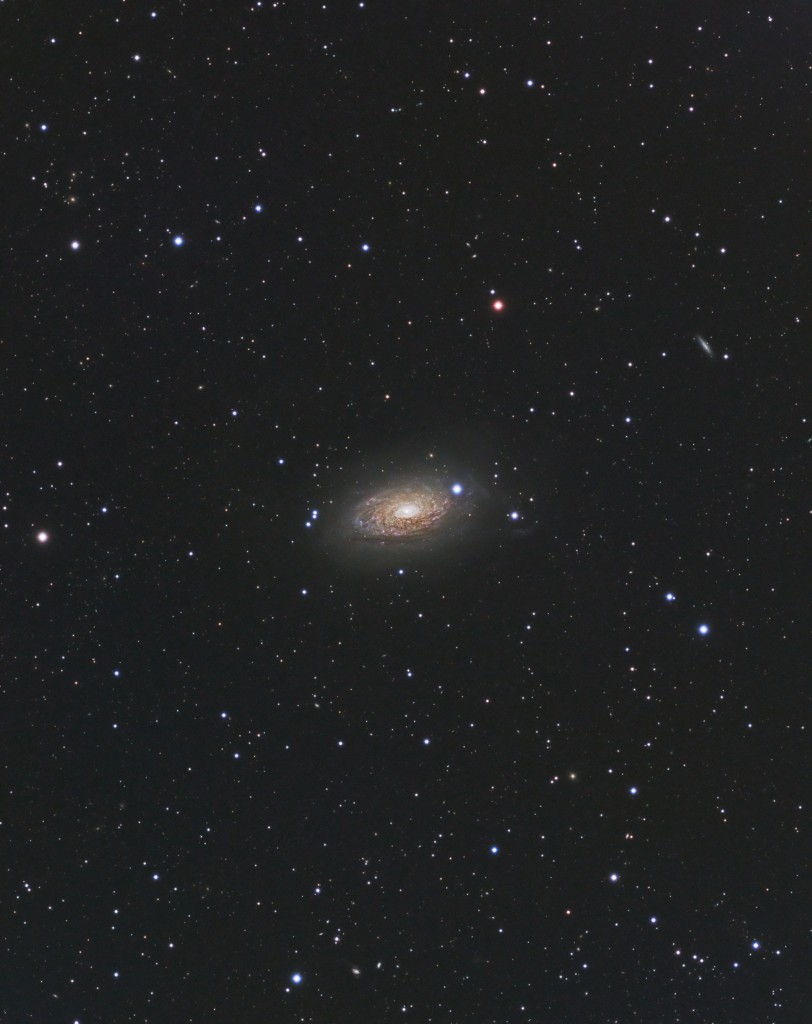
M63 – AP900GTO, Stellarvue SVQ-100, Apogee Ascent A694, Baader LRGB Filters, 4.5 Hour Total Exposure Time.
Messier 63 (also known as M63, NGC 5055, or the Sunflower Galaxy) is a spiral galaxy in the constellation Canes Venatici consisting of a central disc surrounded by many short spiral arm segments. M63 is part of the M51 Group, a group of galaxies that also includes M51 (the ‘Whirlpool Galaxy’). M63 is an active galaxy with a LINER nucleus.[3]
M63 was discovered by Pierre Méchain on June 14, 1779.[4] The galaxy was then listed by Charles Messier as object 63 in the Messier Catalogue.
In the mid-19th century, Lord Rosse identified spiral structures within the galaxy, making this one of the first galaxies in which such structure was identified.[4]
In 1971, a supernova with a magnitude of 11.8 appeared in one of the arms of M63.
Information courtesy of Wikipedia.
Friday night was fantastic without a cloud to be seen. Saturday night was less pristine with a lot of thin cloud moving through. I thought we had some clearing later but a lot of the images from Sat night showed very inconsistent background values which leads me to believe we had thin stuff moving through all night. Still, how many clear nights can you ask for? It was a great TSSP and looking forward to the Fall Star Party.
SQM measurements topped out around 21.3 on Friday night and 21.4 on Saturday night.
While playing with the telescope setup this afternoon I thought I’d take a quick shot at the massive sunspot (AR2529) that everybody has been talking about lately. I also grabbed a quick shot of sunspot AR2532 as well.
On April 1st through April 3rd Pickett State Park, a newly designated IDA Dark Sky Site, held its first Astronomy Weekend Star Party. We were clouded out Friday night but clouds on Saturday finally yielded to clear skies albeit with some very gusty winds until the wee hours of the morning.
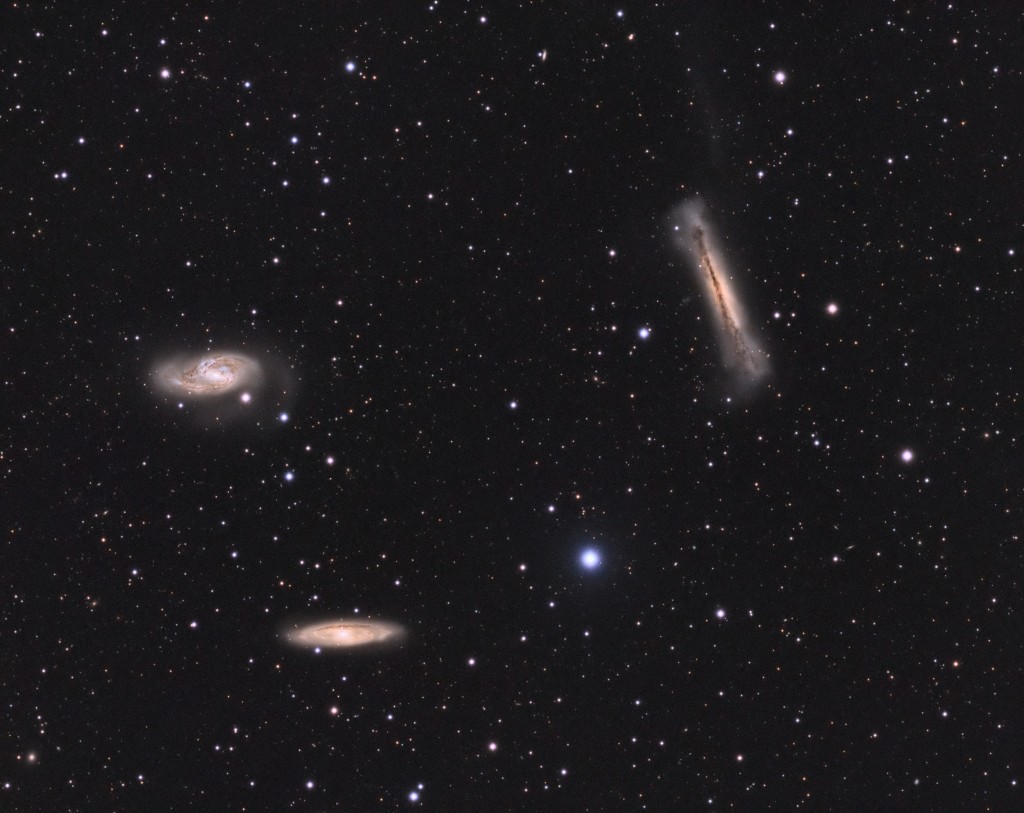
The Leo Triplet – M65, M66, & NGC 3628
Stellarvue SVQ 100, Apogee Ascent A694, AP900GTO Mount, Exposure 4 hours, SQM 21.48
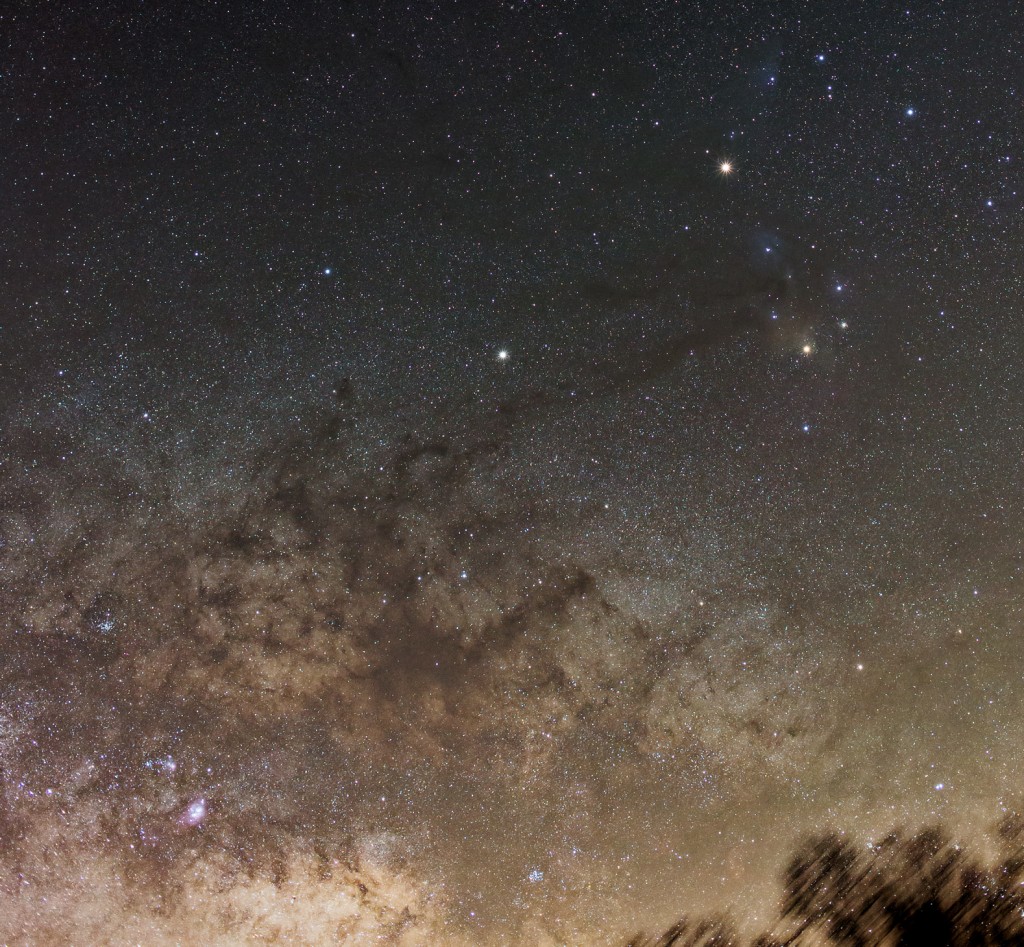
Rho Ophiuchi Cloud Complex stretching down to the Lagoon Nebula Canon 6D with 40mm f/4 ISO 1600 4min single exposure
My buddy and I drove up to Pickett State Park which recently was designated a Dark Sky Park by the International Dark Sky Association. The night wasn’t perfect; cold, little too windy, and high thin clouds to the south that at times mucked with our images. I had wanted to test out a new widefield camera tracker from StarSync LLC. Unfortunately, I forgot my intervalometer so I was limited to 30 second exposures which isn’t the best test. Still, I think it’s the tracker I’ve been waiting for. I love the design.
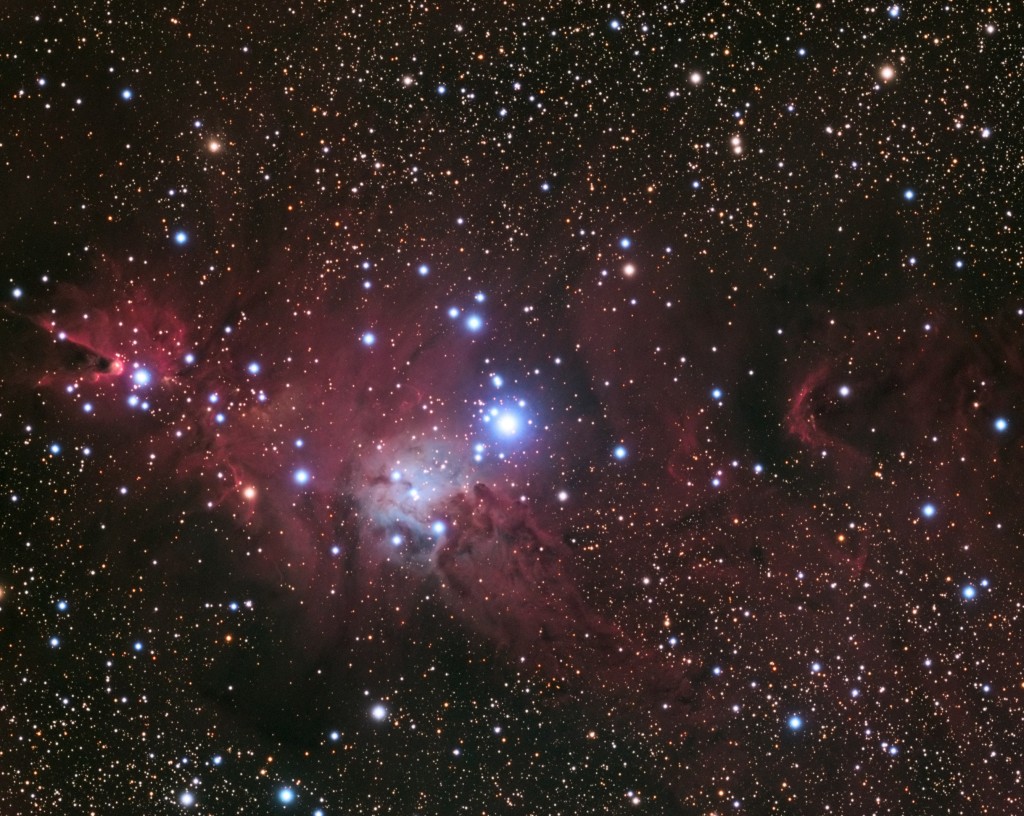
NGC 2264, Sh2-273: The Fox Fur and Cone Nebula. Taken with a Stellarvue SVQ100, Apogee Ascent A694 CCD, Atlas Mount, Baader LRGB Filters, Lodestar Autoguider CCD through an SX-OAG. Exposure time was 21x10min Lum, 6x10min each RGB. Sky brightness (SQM) ranged from 21.2 to 21.38 mag/arcsec^2.
This enigmatic formation of gas and dust lies in the constellation of Monoceros (the Unicorn) not far off the right arm of Orion. This is a close-up of a small section of a much larger complex, generally known as the Christmas Tree cluster. The mysterious Cone Nebula is also a part of this same cloud.
The red regions of this nebula are caused by hydrogen gas that has been stimulated to emit its own light by the copious ultraviolet radiation coming from the hot, blue stars of the cluster. The blue areas shine by a different process: they are mainly dust clouds that reflect the bluish light of the same stars.
Its popular name arises because the nebula looks like the head of a stole made from the fur of a red fox.
Information courtesy of Wikipedia.
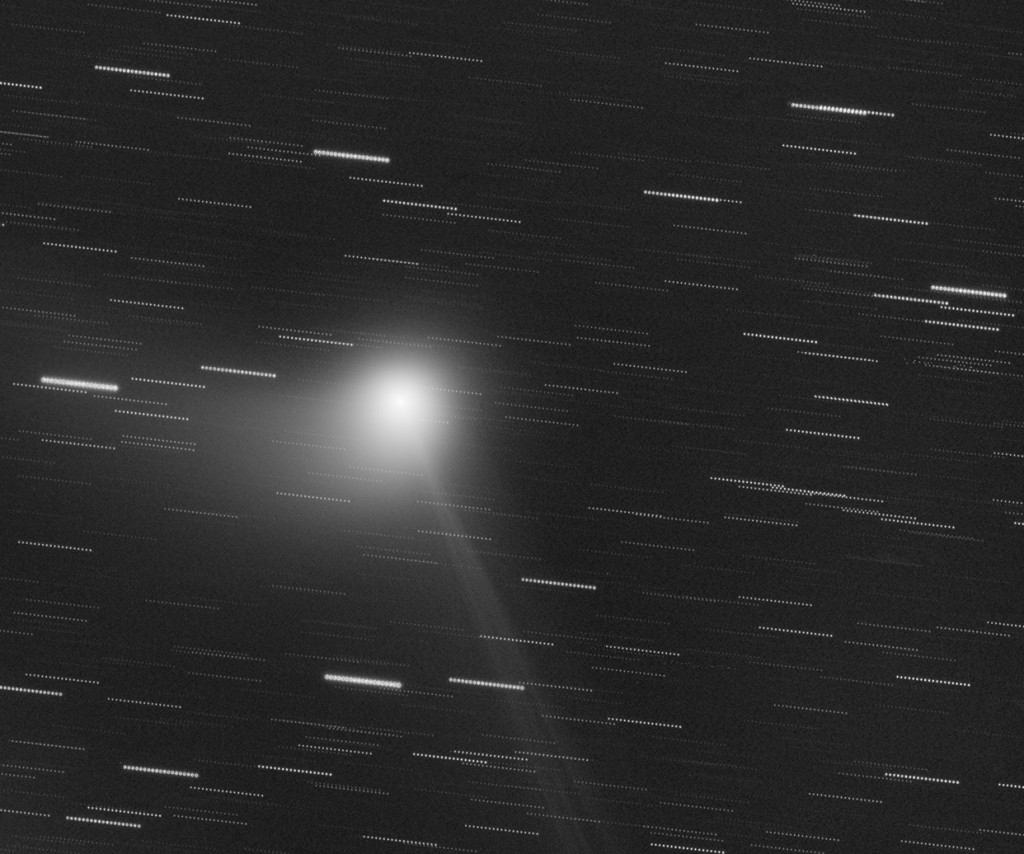
Comet C/2013 US10 (Catalina) Integration centered on the comet and showing the star trails as the comet moves relative to its celestial backdrop.
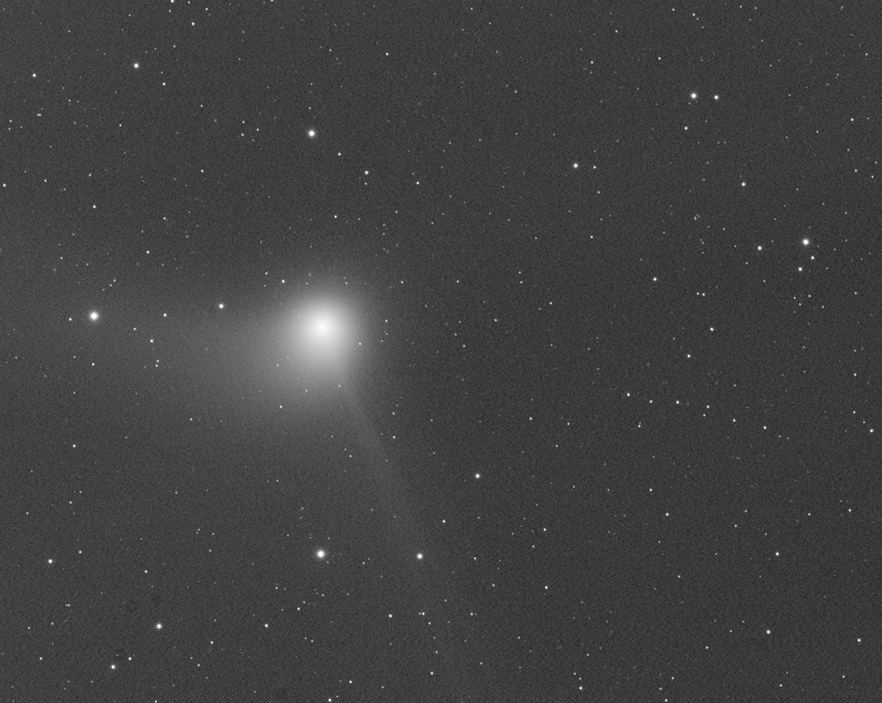
C/2013 US10 (Catalina) is an Oort cloud comet discovered on 31 October 2013 by the Catalina Sky Survey at an apparent magnitude of 19 using a 0.68-meter (27 in) Schmidt–Cassegrain telescope.[1] As of September 2015 the comet is around apparent magnitude 6.[6]
When discovered on 31 October 2013 observations from another object from 12 September 2013 were used in the preliminary orbit determination giving an incorrect solution that suggested an orbital period of only 6 years.[1] But by 6 November 2013 a longer observation arc from 14 August until 4 November made it apparent that the first solution had the wrong object from 12 September.[2]
By early May 2015 the comet was around apparent magnitude 12 and had an elongation of 60 degrees from the Sun as it moved further into the southern hemisphere.[7] The comet came to solar conjunction on 6 November 2015 when the comet was around magnitude 6.[6] The comet came to perihelion (closest approach to the Sun) on 15 November 2015 at a distance of 0.82 AU from the Sun.[3] At perihelion, it had a velocity of 46.4 km/s (104,000 mph) with respect to the Sun which is slightly greater than the Sun’s escape velocity at that distance. It crossed the celestial equator on 17 December 2015 becoming a northern hemisphere object. On 17 January 2016 the comet will pass 0.72 AU (108,000,000 km; 67,000,000 mi) from Earth and should be around magnitude 6[6] while located in the constellation of Ursa Major.
C/2013 US10 is dynamically new. It came from the Oort cloud with a loosely bound chaotic orbit that was easily perturbed by galactic tides and passing stars. Before entering the planetary region (epoch 1950), C/2013 US10 had an orbital period of several million years.[4] After leaving the planetary region (epoch 2050), it will be on an ejection trajectory.[4]
Information courtesy of Wikipedia.
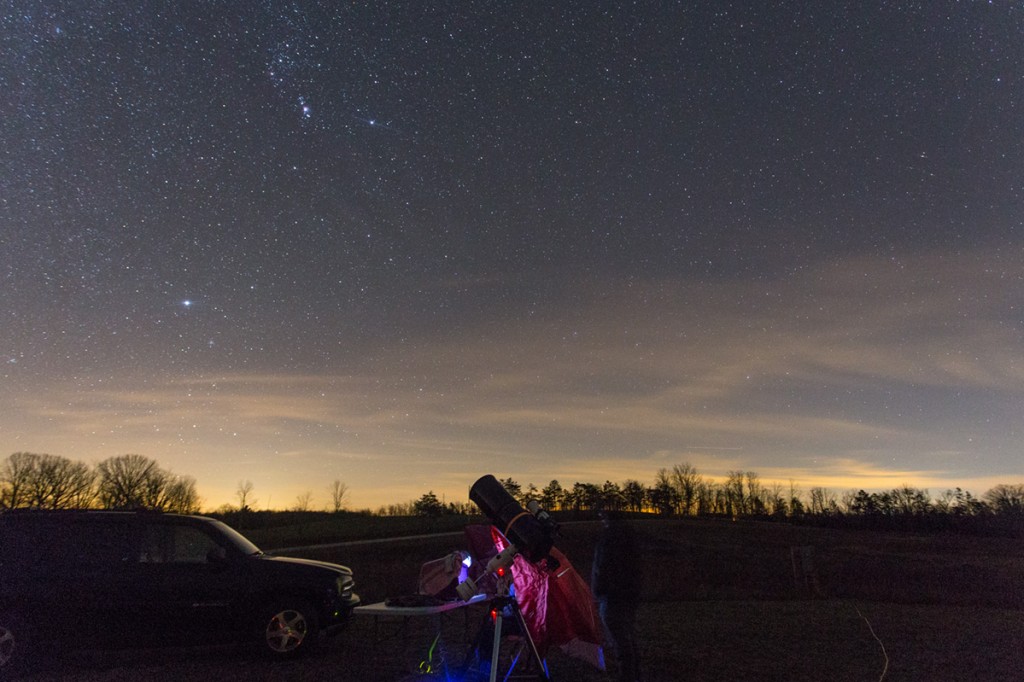
Thin clouds to the south lingered half of the night. 30 second exposure at 17mm FL, Canon 6D, tracked on StarSync Tracker. Orions belt and sword are prominent.